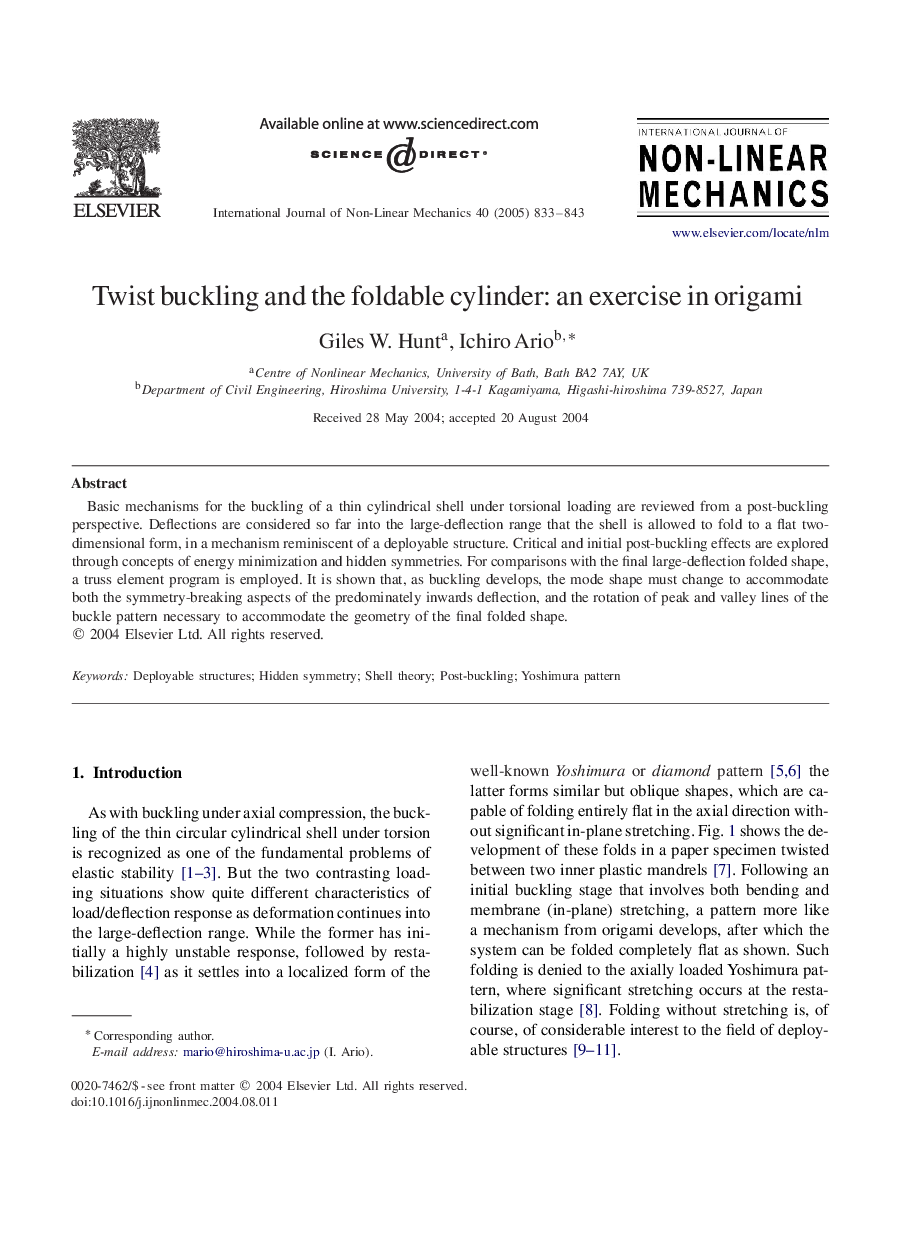| Article ID | Journal | Published Year | Pages | File Type |
|---|---|---|---|---|
| 9706627 | International Journal of Non-Linear Mechanics | 2005 | 11 Pages |
Abstract
Basic mechanisms for the buckling of a thin cylindrical shell under torsional loading are reviewed from a post-buckling perspective. Deflections are considered so far into the large-deflection range that the shell is allowed to fold to a flat two-dimensional form, in a mechanism reminiscent of a deployable structure. Critical and initial post-buckling effects are explored through concepts of energy minimization and hidden symmetries. For comparisons with the final large-deflection folded shape, a truss element program is employed. It is shown that, as buckling develops, the mode shape must change to accommodate both the symmetry-breaking aspects of the predominately inwards deflection, and the rotation of peak and valley lines of the buckle pattern necessary to accommodate the geometry of the final folded shape.
Related Topics
Physical Sciences and Engineering
Engineering
Mechanical Engineering
Authors
Giles W. Hunt, Ichiro Ario,
